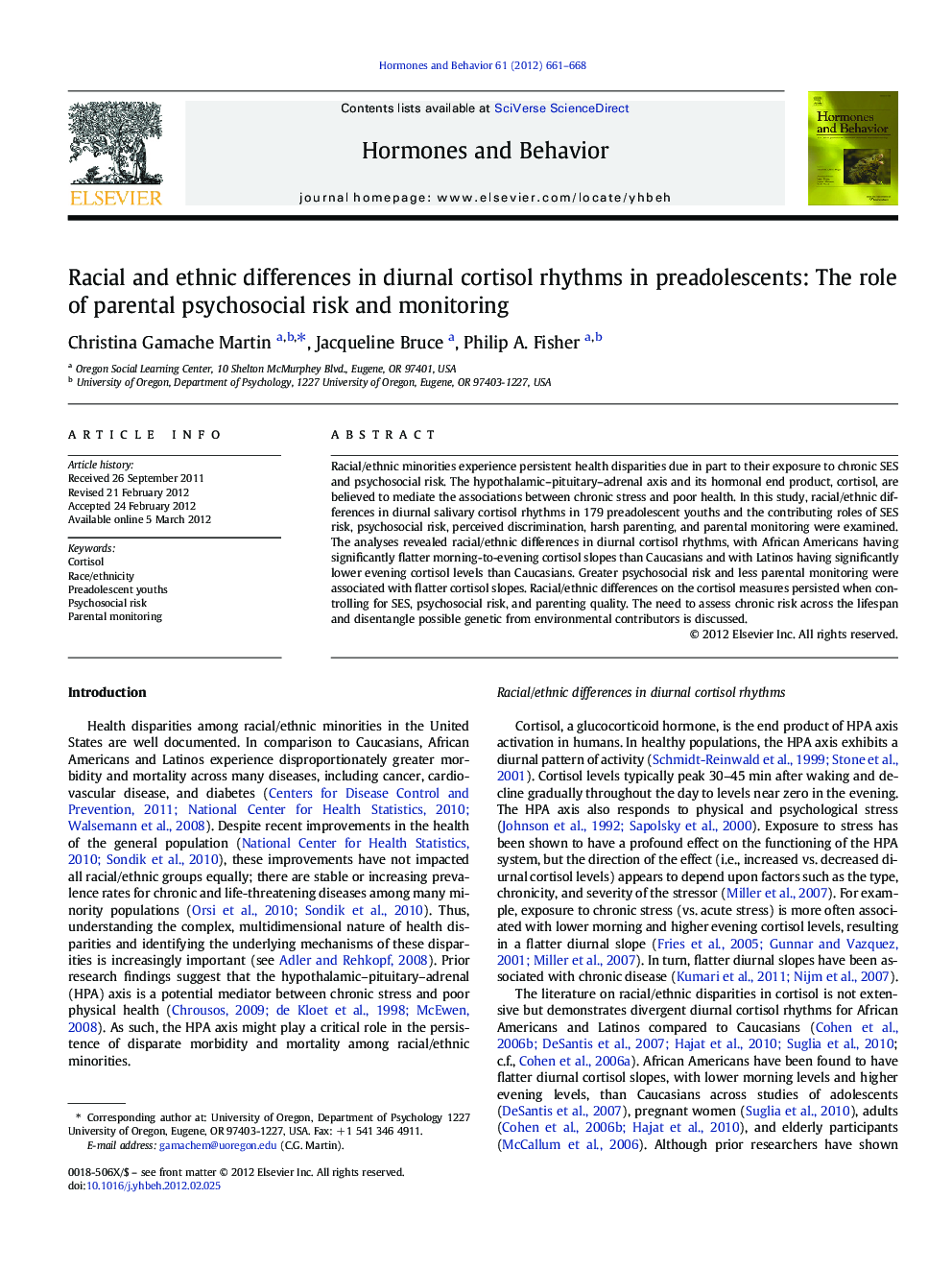| Article ID | Journal | Published Year | Pages | File Type |
|---|---|---|---|---|
| 323425 | Hormones and Behavior | 2012 | 8 Pages |
Racial/ethnic minorities experience persistent health disparities due in part to their exposure to chronic SES and psychosocial risk. The hypothalamic–pituitary–adrenal axis and its hormonal end product, cortisol, are believed to mediate the associations between chronic stress and poor health. In this study, racial/ethnic differences in diurnal salivary cortisol rhythms in 179 preadolescent youths and the contributing roles of SES risk, psychosocial risk, perceived discrimination, harsh parenting, and parental monitoring were examined. The analyses revealed racial/ethnic differences in diurnal cortisol rhythms, with African Americans having significantly flatter morning-to-evening cortisol slopes than Caucasians and with Latinos having significantly lower evening cortisol levels than Caucasians. Greater psychosocial risk and less parental monitoring were associated with flatter cortisol slopes. Racial/ethnic differences on the cortisol measures persisted when controlling for SES, psychosocial risk, and parenting quality. The need to assess chronic risk across the lifespan and disentangle possible genetic from environmental contributors is discussed.
► Racial/ethnic differences in diurnal cortisol rhythms in preadolescent youth. ► African American youths had significantly flatter cortisol slopes than Caucasians. ► Latino youths had significantly lower evening cortisol levels than Caucasians. ► Psychosocial stress and less parental monitoring linked to flatter cortisol slopes. ► Racial/ethnic differences in cortisol remained when contextual and parenting risk was controlled.
